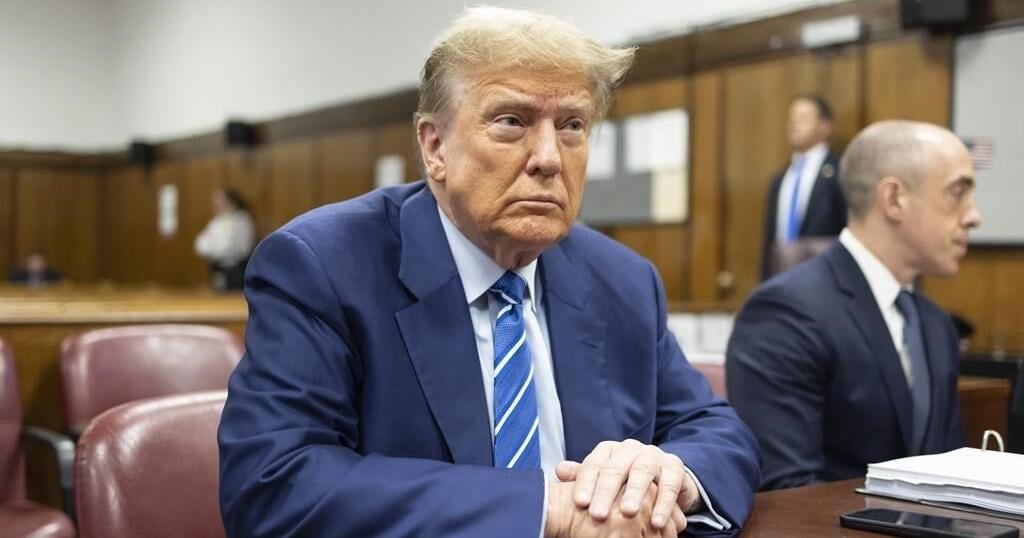NEW YORK (AP) — Manhattan prosecutors balked Tuesday at Donald Trump ‘s effort to delay post-trial decisions in his New York hush money criminal case while he seeks to have a federal court intervene and potentially overturn his felony conviction. However, they said they could be OK with postponing the former president’s Sept. 18 sentencing.
The Manhattan district attorney’s office argued in a letter to the trial judge that the judge has no legal obligation to hold off on post-trial decisions after Trump asked the U.S. District Court in Manhattan last week to take control of the case from the state court where it was tried.
Prosecutors urged the judge, Juan M. Merchan, not to delay his rulings on two key defense requests: Trump’s call to delay sentencing until after the November election, and his bid to overturn the verdict and dismiss the case in the wake of the U.S. Supreme Court’s presidential immunity ruling.
Merchan has said he will rule Sept. 16 on Trump’s motion to overturn the verdict. His decision on delaying sentencing has been expected in the coming days.
Trump was convicted in May of 34 felony counts of falsifying business records to conceal a $130,000 hush money payment to porn actor Stormy Daniels, whose affair allegations threatened to disrupt his 2016 presidential run. Trump has denied her claim and said he did nothing wrong.
Falsifying business records is punishable by up to four years behind bars. Other potential sentences include probation or a fine.
In a letter Tuesday, Assistant District Attorney Matthew Colangelo reiterated that prosecutors have not staked a position on whether to delay sentencing, deferring to Merchan on an “appropriate post-trial schedule.”
Trump’s lawyers have argued that sentencing Trump as scheduled, just two days after Merchan’s expected immunity decision, would not give him enough time to weigh next steps — including a possible appeal — if Merchan rules to uphold the verdict.
They also argued that sentencing Trump on Sept. 18, about seven weeks before Election Day would be election interference, raising the specter that Trump could be sent to jail as early voting is getting under way.
Colangelo said Tuesday that prosecutors were open to a schedule that allows “adequate time” to adjudicate Trump’s motion to set aside the verdict while also sentencing him “without unreasonable delay.”
In a letter to Merchan last week, Trump’s lawyers said delaying the proceedings is the “only appropriate course” as they seek to have the federal court rectify a verdict they say was tainted by violations of the Republican presidential nominee’s constitutional rights and the Supreme Court’s ruling that gives ex-presidents broad protections from prosecution.
If the case is moved to federal court, Trump’s lawyers said they will then seek to have the verdict overturned and the case dismissed on immunity grounds. On Friday, the federal court kicked back Trump’s request to take the case, citing technical issues. His lawyers will have a chance to resubmit it.
The Supreme Court’s July 1 ruling reins in prosecutions of ex-presidents for official acts and restricts prosecutors in pointing to official acts as evidence that a president’s unofficial actions were illegal.
Trump’s lawyers have argued that prosecutors rushed to trial instead of waiting for the Supreme Court’s presidential immunity decision, and that prosecutors erred by showing jurors evidence that should not have been allowed under the ruling, such as former White House staffers describing how Trump reacted to news coverage of the hush money deal and tweets he sent while president in 2018.
Trump’s lawyers had previously invoked presidential immunity in a failed bid last year to get the hush money case moved from state court to federal court.
